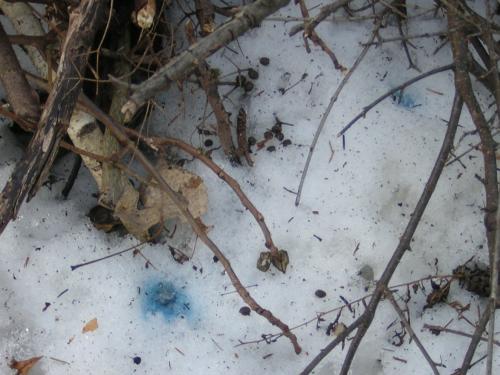Habitat in the backyard – Part 6: Poop!
Teach young children about wildlife in their backyard by looking at scat! You can learn about the animals living next door, their habits, and their diet by examining what they leave behind.
 This is the sixth in a series of articles on science activities about the natural world that anyone can conduct with children. This can be done within a family, in a day-care setting, as part of school activities, a 4-H Club or with any group working with young children.
This is the sixth in a series of articles on science activities about the natural world that anyone can conduct with children. This can be done within a family, in a day-care setting, as part of school activities, a 4-H Club or with any group working with young children.
In our last article we discussed following tracks through the snow. There are lots of other signs you can find related to animals, and they are often easier to find in the winter. Without leaves on trees and tall grasses and weeds, you can see more when you go for a walk outside. Eating and pooping are two ends of one of the most important processes animals need to live. You can learn a lot about the life in your landscape by looking at the legacy they leave behind.
Here are some activities you can do when looking for animal sign.
- Identify the poop (also called scat). Every animal from mammals, to birds, to insects leave droppings behind. A guide to identifying scat is available online. Why is the scat shaped that way? Rabbits tend to have round pellets while deer are more bullet-shaped.
- You can flush out all kinds of information by digging through droppings. Using sticks or gloved hands, pick apart the pellets and try to determine what the animal ate. Is the animal a meat-eater, plant-eater or both? Is there bark, seeds, grass, fur, feathers or bone left behind? Are there any insects sitting on the stool? Be careful when conducting this activity, manure may have germs and parasites, and make sure you wash your hands afterwards. When it is dry outside, scat can also carry airborne disease, particularly if it is very dusty.
- How old are droppings? When you break apart the scat is it still soft or does it crumble? The older and scat is, usually the drier it is. If a scat is very fresh, it might even be steaming in the winter snow. Is the “stuff” in the scat food you would normally find at this time of year? If it is winter, and you find leaves, it was probably left earlier in the year.
- How many animals do you think there are in the area? Some animals, such as raccoons, have community latrines and use the same spot for their bathroom.
- You never know what you might run into. Several years ago, a co-worker said she had bright “Kool-Aid” blue spots around her brush pile. This brush pile was not near sidewalks or roadways so it was probably not a spilled chemical. There were rabbit droppings as well around the pile, so she was concerned that someone might be poisoning the rabbits. It turns out that when rabbits eat buckthorn, an invasive shrub, a chemical is excreted in their urine that turns blue when exposed to sunlight.
Have fun exploring the outdoors and looking at scat. But don’t get wiped-out from working too hard.
The next article in this series is called Science ideas for young children – Part 7: Signs of spring.



 Print
Print Email
Email




